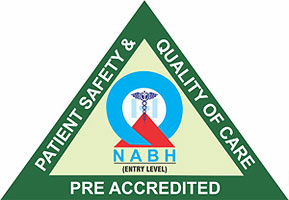+91-9240214610 (Bandra)
+91-9240214611 (Kandivali)




March 14, 2023 | Author: Admin
Visual snow syndrome occurs when you constantly see snow or static, such as the image on an outdated television. Many people who suffer from it also suffer from migraine headaches, and there’s no standard treatment approach for it.
Visual snow syndrome is a rare neurological disorder in which images and scenery appear "snowy," as if the environment in front of the person is filtered through television static. Even when a person closes their eyes, the problem does not go away, and it can also cause light sensitivity and floaters.
The visual snow syndrome (VSS) causes small, dispersed dots to appear throughout the field of vision. The dots do not grow or shrink and do not form clumps.
Visual snow syndrome is classified into two types:
The severity of visual snow syndrome can range from mild to severe, depending on the individual and the symptoms they are experiencing.
Visual snow syndrome is a rare condition. It is believed that only 2–3% of the world’s population is affected.
The specific cause of visual snow syndrome is unknown, but it is most likely caused by a brain problem. Some experts believe that it is a neurological disorder with sensory (visual) and psychological components.
Because visual snow syndrome affects a person’s whole range of vision, experts believe it happens in the visual cortex of the brain. In other words, images are not formed appropriately in the visual field because they are not processed correctly in the brain to begin with.
Visual snow syndrome symptoms are mostly visual, though some persons also experience headaches, light sensitivity, and ringing in the ears.
Particular symptoms of the condition include:
Additional associated visual symptoms with the "visual snow syndrome" are:
Additional associated non-visual symptoms with visual snow syndrome are:
Several providers have discovered that visual snow syndrome is found in people who also have the following conditions:
Your healthcare provider will begin by gathering your medical history and asking about your symptoms.They may then perform a physical examination and a thorough eye exam.
To accomplish this, your clinician may order imaging or other testing. You may need to see both a neurologist and an ophthalmologist. A visit to a neuro-ophthalmologist would be great.
There is currently no cure for visual snow syndrome, but patients can do things to manage their symptoms. For example, you can:
There is no cure for visual snow syndrome at the moment, but patients can take steps to control their symptoms.
It can be highly stressful to develop a new or worsening eye condition, especially when the causes are unknown. If you are experiencing constant "snow" or "static" in your visual field, please visit our experts at Ojas – Eye Hospital in Mumbai.